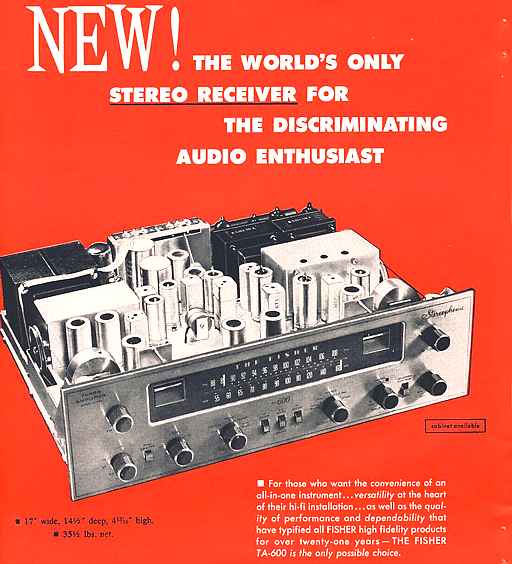
The Fisher tuner/amplifier 600 was Fisher's first stereo receiver. It is among those expensive audio components that I had only read about in old catalogs and magazines.

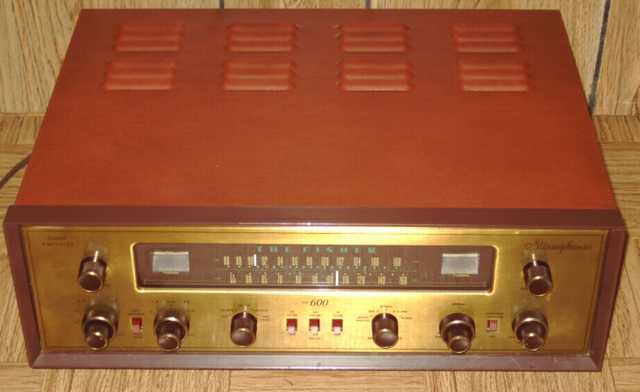
The 600 amp uses four 7189 tubes for stereo, rated 20 watts per channel in class AB1 push-pull. It uses two tube rectifiers, the 5AR4/GZ34 for the higher voltage and a 6V4/EZ80 for the lower B+.
The 600 not only has an excellent FM tuner section, but the AM section is quality as well. In contrast with later high-end receivers which give too little attention to the AM side, the 600 was designed in an era when AM and FM were sometimes used as the left and right channels for stereo. The AM and FM tuning controls are separate, allowing each to be tuned to a station independently. The outboard multiplex adapter for full FM stereo was sold separately. The 600 has the switch position and connectors for the multiplex adapter.
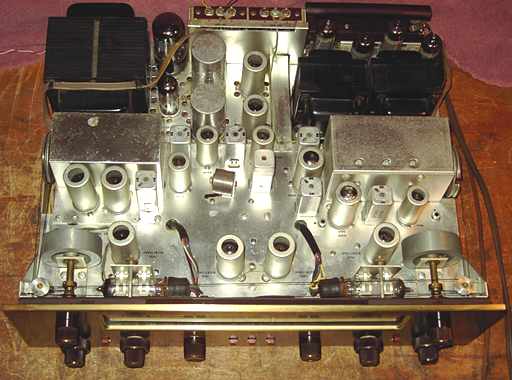
Repairs
two bad tubes, open power resistor
This receiver was in very good cosmetic condition as acquired. The original schematics and user manuals came with it. The Sams Photofact for the TA-600 is 478-10.
A quick glance showed that the GZ34/5AR4 was bad. A whitish material inside the tube at the top of the glass usually means loss of vacuum. I have encountered several such dead GZ34 rectifiers. Pulling the set from the case revealed a tube with broken glass, the 6AJ8/ ECH81 oscillator/ converter. It had apparent been broken some time ago. Fortunately, I had both tubes.
I usually check an audio amp or any device carefully with an ohmmeter (analog VOM) before powering anything, doing safety checks and looking for any low resistance readings in the B+ circuits. In an amp, I hook up speakers and then check the audio output transformers and connections by doing an ohmmeter check from the B+ line to the plate connections of the output tubes. A scratchy noise in the speaker tells me that an audio transformer is intact and the connections are good. That is how I quickly found an open 140 ohm 10 watt resistor in the power supply. I replaced it with a 150 ohm 25 watt piece from the junk box that measured at 145 ohms.
I disconnected the coupling caps to the output tubes to check them. They had apparently been replaced at one time in the set's life. The caps tested fine. All the controls were cleaned with deoxit. I used an external regulated variable power supply (Heathkit PS-4) to reform the electrolytics. All reformed well. I pulled the rectifier tubes and powered the receiver for just the tube filaments, measuring the power transformer voltages after being satisfied that current draw was appropriate. After a few minutes, I checked for heating of each tube. Two 12AX7 tubes were cold. A quick check of the schematic showed why. Their filaments are powered by the cathode bias circuit of the output tubes, a relatively easy way to supply their filaments with DC to avoid hum on a high-gain stage.
With the rectifiers installed, I powered up the receiver slowly at reduced voltage with my isolated variac while monitoring the main B+. All B+ voltages were as expected and the receiver began working. Power draw is specified as 175 watts at 120 volts. When powered fully, that was indeed the wattage drawn.
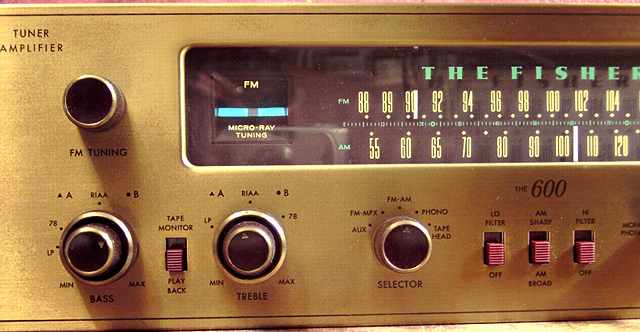
Performance
Despite its complexity, the receiver performed very well after repairs. All the functions worked as expected. After a bit of alignment tweaking, I listened to some FM stations and then switched to AM for my favorite weak-signal AM oldies stations. I was not disappointed. The receiver was a joy to listen to. The loopstick AM antenna could be swung for best reception. No external antenna for AM was needed even though the connections are available.
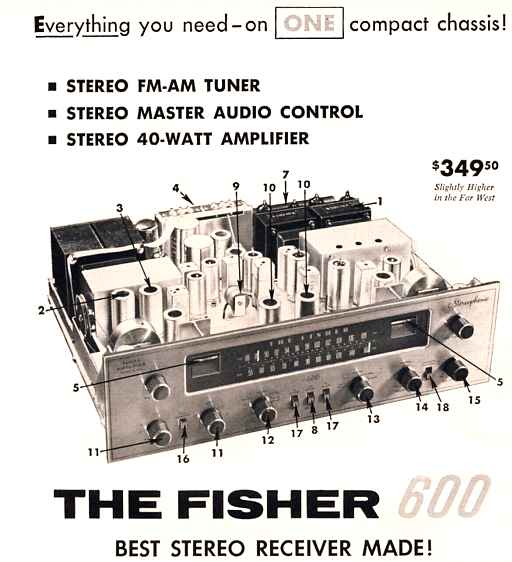
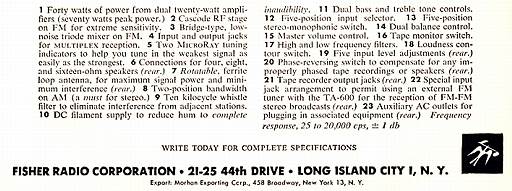
The Hewlett-Packard HP-200CD audio generator was the previous item on the bench.